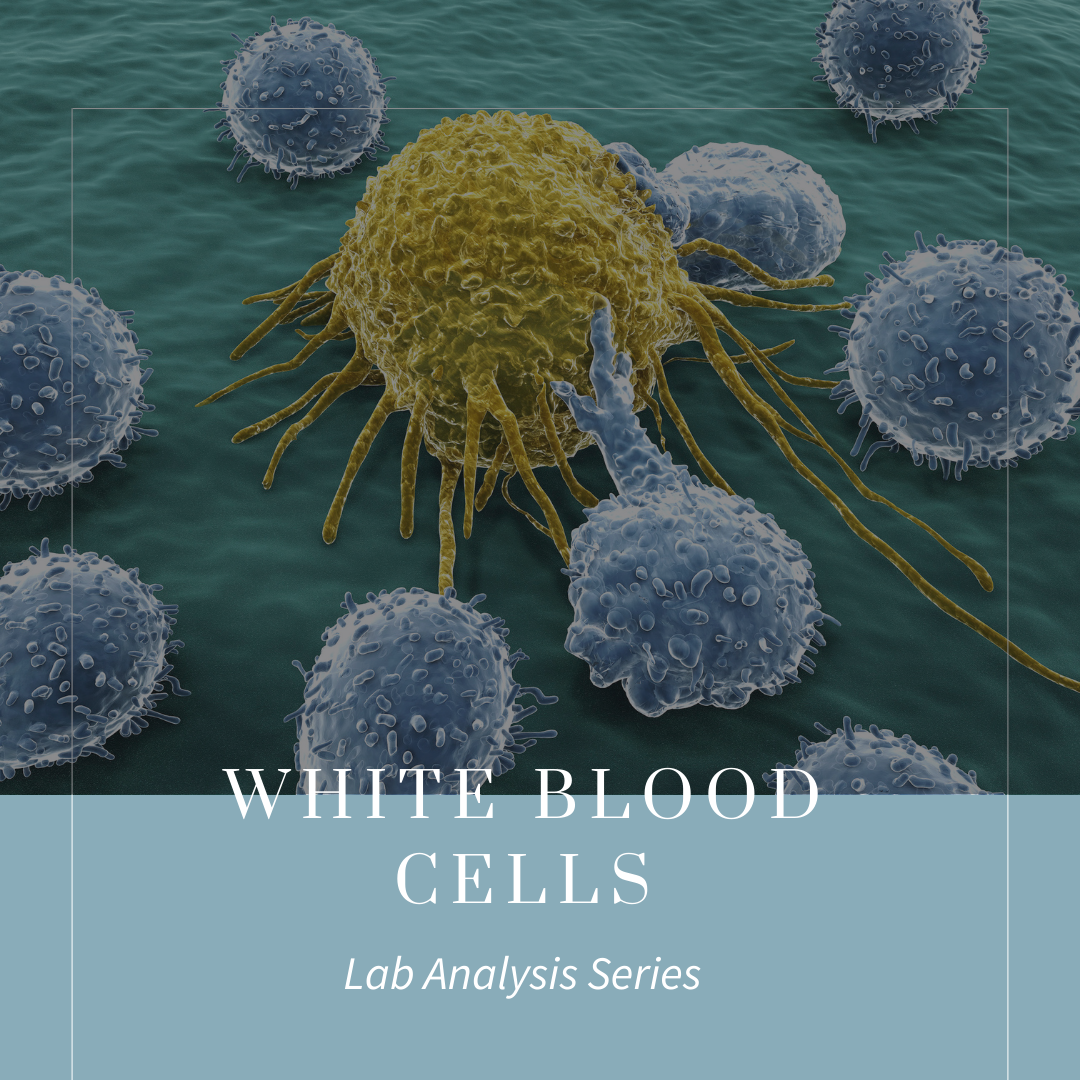Total White Blood Cell Count (WBC) TestThe total white blood cell count (WBC) measures the total amount of WBC found in the blood sample. It is found in the Complete Blood Count (CBC) panel. This panel can be run with or without a differential. The WBC count is a valuable tool in assessing maternal health. Levels that are too high or too low may indicate disfunction and may be a predictive factor for complications. WBCs are also known as leukocytes. These cells are part of the immune system and help to fight infections and inflammation. The major types of white blood cells include:
White Blood Cells in PregnancyDuring pregnancy hormonal shifts drive an increase in the overall production of white blood cells, but with a shift in differential. Studies have shown that WBCs help with placental development and maintenance of the maternal - fetal tolerance. The upper reference range for WBC is elevated by 36%, which is primarily driven by a sharp rise in neutrophils and monocyte production, and a sharp decrease in lymphocytes production. WBC counts peak in the third trimester, just before delivery, and again during childbirth. This is thought to be part of the body's preparation for potential infection during childbirth. Neutrophils increase by 55%. Chemotaxis, the ability of neutrophils to migrate toward sites of infection or inflammation, may be somewhat impaired during pregnancy. This adaptation helps prevent an overly aggressive immune response to the developing fetus. This change is primarily driven by progesterone. Progesterone also reduces NETosis. NETosis is the process by which neutrophils release web-like structures that trap pathogens. There is a decrease in lymphocyte production of 36%. This helps to protect the placenta and fetus from immune system attacks, as they are foreign cells. These levels are decreased through the second trimester and increase again during the third trimester in preparation for childbirth. Pregnancy induces a shift in the immune response, favoring a type 2 helper T cell (Th2) response. This shift is thought to support the maintenance of pregnancy. Th2 responses are associated with antibody production and tissue repair. Monocytes increase by approximately 38%. Serum monocyte levels remain elevated until 20 weeks, and then decrease slightly in the third trimester. It is normal for there to be a slight increase in the proinflammatory pattern in pregnancy. Macrophages can be found in the maternal-fetal interface. Macrophages play a positive role in embryo implantation, placental formation, embryonic development, and delivery processes. Dendritic cells play a critical immuno-modulating role in pregnancy, which requires the maternal immune system to tolerate the fetus and at the same time to maintain adequate defense against pathogens There is a mild suppression of eosinophil production in pregnancy, but it should not be suppressed below normal ranges. This suppression can make it difficult to identify parasite infections in pregnancy and may reduce the immune system response to parasites. During pregnancy basophil levels slightly decrease and return to normal 4-6 weeks postpartum. This decrease should not be evident in the blood work. The overall immune response during pregnancy is shifted towards a state of immune tolerance, allowing the maternal immune system to coexist with the semi-allogeneic fetus. This balance is essential to prevent the rejection of the fetus as a foreign entity. However, the altered immune response can render pregnant individuals more susceptible to some infections. High White Blood Cell Counts in PregnancyStudies have shown that a total WBC >10.0 × 10^9/L in the first trimester is associated with an increased risk of developing late onset preeclampsia. The risk of preeclampsia in those with a mild increase of the normal pregnancy range is most likely not a predictive marker. Better studies should be conducted with great variation in group ranges. An elevated WBC >10.0 × 10^9/L in the first trimester increases the risk of miscarriage, preterm delivery, and PPROM. Elevated lymphocytes are associated with an increased risk of miscarriage and implantation failure. This may be seen in those with repeated failed IVF transfers. Causes of High White Blood Cell Counts in Pregnancy
Low White Blood Cell Counts in PregnancyLow WBC (<9× 10^9/L), low neutrophil count, and neutrophil-to-lymphocyte ratio are decreased in women with Cholestasis in the third trimester. Lymphocytopenia is a normal presentation in pregnancy. Levels that are excessively low, or below normal ranges can increase the risk of infections in pregnancy. Causes of Low White Blood Cell Counts in Pregnancy
What to Know More....Copyright © 2024 Functional Maternity, all rights reserved. The content in this article is not intended to be a substitute for professional medical advice, diagnosis, or treatment. Always seek the advice of your physician or other qualified health provider with any questions you may have regarding your medical condition.
0 Comments
Leave a Reply. |
Hi There!I'm Sarah Thompson, the author of Functional Maternity, and the upcoming book Beyond Results - A practitioner's Handbook to Effective Functional Lab Analysis in Pregnancy. Lab Tests
All
|


 RSS Feed
RSS Feed